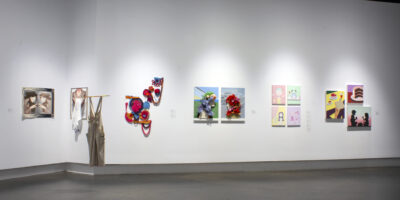My piano teacher once told me that the beginning and the ending are the most important parts of any piece. If you had to make a mistake, let it be in the middle; a mistake at the end would leave a foul after-taste to what could otherwise have been an enjoyable piece and a mistake at the beginning could make your audience unable to take you seriously for the remaining time as they just wait for you to mess up again. Middles are far more lenient in this respect – your audience already trusts you to do well, and there is time remaining to rebuild that trust once you shatter it with that completely horrendous thing you did.
The nice thing about the fine arts is that there is much to be gathered and learned from them, and – if executed with enough finesse – their lessons can be applied to so much in your own life. Say, for example, a co-op term is hastily approaching, and interviews are at bay. One would only have to look to their piano teacher for guidance towards success with the boss: ‘Give a good first impression, and don’t piss them off on your way out the door’.
Or, say, you are writing a column for your faculty newspaper. You would have no fear of the daunting task, for as long as your first piece was filled with great humour, interesting observations, and irresistible wit, you would undoubtedly gain many adoring and loyal fans to see you through the end. If not, you had comfort in knowing that no one would probably read it after your first terrible article and you were free from the looming fear of criticism and failure.
Yes, beginnings are the first major milestone in any piece of fine art, and they almost always serve the same purpose: to get people ridiculously excited for what is to come, maybe let the artist show off a little, and to let everyone know what in blazes is even going on (Note: Some artists still struggle a little with the last point).
It is useful to set up a simple classification of these arts, for convenience. There are the musical arts, the performing arts – which may or may not come with a side serving of music – the visual arts, the written arts, as well as the arts formerly known as film (new digital name pending).
The nature of fine arts in their vastness merits that becoming a so-called “expert” in any of these subsets a very lengthy process with much commitment involved — and using the c-word in any sort of positive context seems blasphemous. However, I do not claim to be an expert about any of the subjects. Nor does one have to be an expert in order to appreciate the wonders of fine arts. Much like understanding the inner workings of a machine or program, simply understanding some of the finer points can be a beautiful and delightful experience. The more you understand about the processes and details, the better of an appreciation you will have for the value of the art. It also makes you look pretty damned sophisticated, which is never a bad trait to have.
Although I know little on certain subjects (such as the visual arts, despite the immeasurable amount of respect I have for the talents of such artists), there is much I enjoy. And, when it really comes down to it, its the enjoyment that makes the fine arts so… enjoyable. So tune in next week, when we stop beating around the bush and get down into the nitty-gritty of the fine arts, and investigate just what makes each of them tick. Or tock, depending on your perspective. Metaphorically speaking, of course. Excuse the idioms.




Leave a Reply